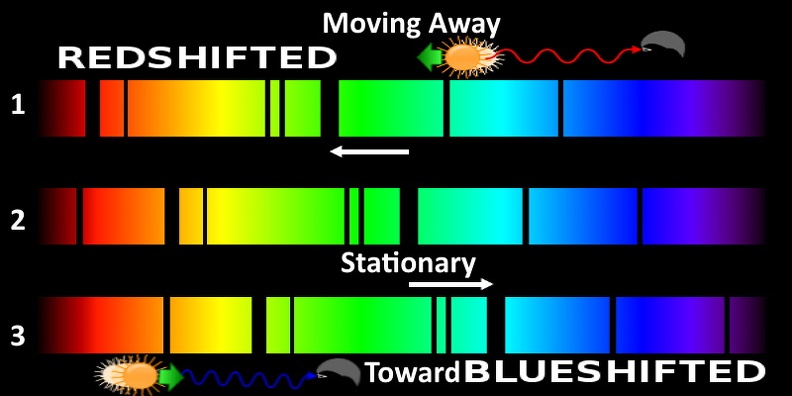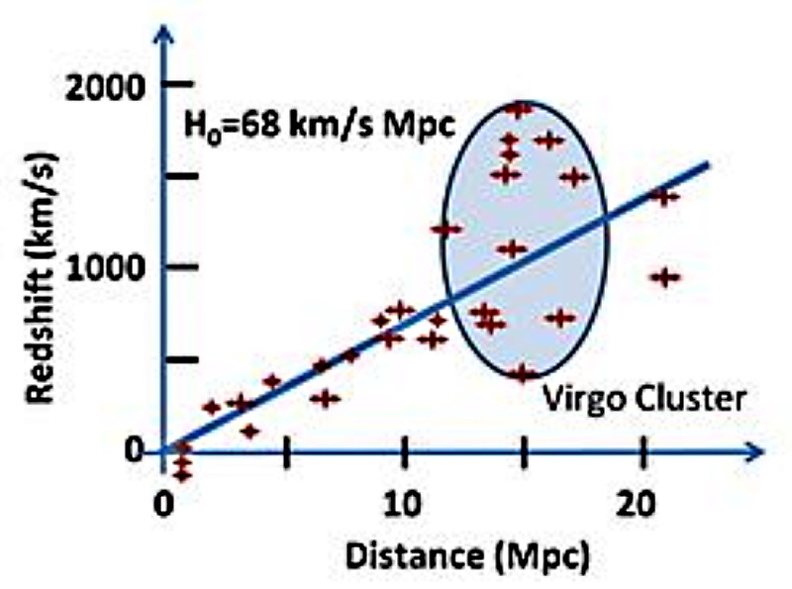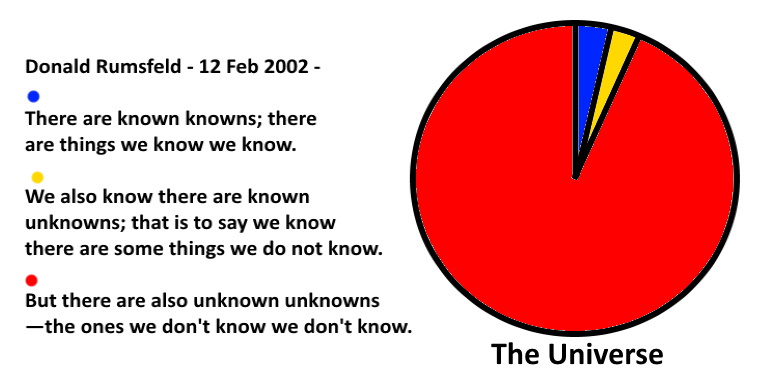Post by 1dave on Nov 17, 2019 15:12:32 GMT -5
Our Big Bang

We be smart!
After the Dark Ages (476 AD – 1492 - lasted from the 5th to the 15th century. It began with the fall of the Western Roman Empire and merged into the Renaissance and the Age of Discovery) we began a rapid learning curve, and by 1920 we knew:
1. The Sun was the center of the universe and the planets and stars revolved around it!
2. The Elements: In 1669 German merchant and amateur alchemist Hennig Brand attempted to created a Philosopher’s Stone; an object that supposedly could turn metals into pure gold. He heated residues from boiled urine, and a liquid dropped out and burst into flames. This was the first discovery of phosphorus.
By 1809 at least 47 elements were discovered, and scientists began to see patterns in the characteristics.
In 1863 English chemist John Newlands divided the then discovered 56 elements into 11 groups, based on their characteristics.
In 1869 Russian chemist Dimitri Mendeleev started the development of the periodic table, arranging chemical elements by atomic mass. He predicted the discovery of other elements, and left spaces open in his periodic table for them.
In 1886 French physicist Antoine Bequerel first discovered radioactivity. Thomson student from New Zealand Ernest Rutherford named three types of radiation; alpha, beta and gamma rays. Marie and Pierre Curie started working on the radiation of uranium and thorium, and subsequently discovered radium and polonium. They discovered that beta particles were negatively charged.
In 1894 Sir William Ramsay and Lord Rayleigh discovered the noble gases, which were added to the periodic table as group 0.
In 1897 English physicist J. J. Thomson first discovered electrons; small negatively charged particles in an atom. John Townsend and Robert Millikan determined their exact charge and mass.
In 1900 Bequerel discovered that electrons and beta particles as identified by the Curies are the same thing.
In 1903 Rutherford announced that radioactivity is caused by the breakdown of atoms.
In 1911 Rutherford and German physicist Hans Geiger discovered that electrons orbit the nucleus of an atom.
In 1913 Bohr discovered that electrons move around a nucleus in discrete energy called orbitals. Radiation is emitted during movement from one orbital to another.
In 1914 Rutherford first identified protons in the atomic nucleus. He also transmutated a nitrogen atom into an oxygen atom for the first time. English physicist Henry Moseley provided atomic numbers, based on the number of electrons in an atom, rather than based on atomic mass.
3. Albert Einstein published the theory of special relativity in 1905, building on many theoretical results and empirical findings obtained by Albert A. Michelson, Hendrik Lorentz, Henri Poincaré and others. Max Planck, Hermann Minkowski and others did subsequent work.
Einstein developed general relativity between 1907 and 1915, with contributions by many others after 1915. The final form of general relativity was published in 1916.
So by 1920 we knew everything!
❦

Then along came Edwin Hubble (born November 20, 1889, Marshfield, Missouri, U.S.—died September 28, 1953, San Marino, California).
He entered graduate school at the University of Chicago to study astronomy at the university's Yerkes Observatory, where he received his Ph.D. in 1917. His dissertation was titled "Photographic Investigations of Faint Nebulae," studying the Messier objects - a set of 110 astronomical objects catalogued by the French astronomer Charles Messier, a preliminary version which first appeared in the Memoirs of the French Academy of Sciences in 1771
It was Hubble’s great good fortune that he competed his graduate studies just as the 100-inch (254-cm) Hooker telescope (the most powerful in the world) was nearing completion. George Ellery Hale, the director of the Mount Wilson Observatory in California, was scouting for new staff.
Finally installed at Mount Wilson after WWI, Hubble initially studied reflection nebulae within the Milky Way. However, he soon returned to the problem of the so-called spiral nebulae, objects he had investigated for his doctorate at Chicago. The status of the spirals (as they were widely known) was then unclear. Were they distant star systems (galaxies in current terminology) comparable to the Milky Way Galaxy, or were they clouds of gas or sparse star clusters within, or close by, the Milky Way? The theory that there are visible galaxies had fallen from favor in the second half of the 19th century but was revived early in the 20th century.
At the start of the 1920s, astronomers generally reckoned that no clinching evidence was at hand to settle the debate. Such evidence, however, was soon to be provided by Hubble.
In 1923 Hubble found Cepheid variable stars in the Andromeda Nebula, a very well-known spiral. The fluctuations in light of these stars enabled Hubble to determine the nebula’s distance using the relationship between the period of the Cepheid fluctuations and its luminosity.
Although there was no clear consensus on the size of the Milky Way, Hubble’s distance estimate placed the Andromeda Nebula approximately 900,000 light-years away.
If Hubble was right, the Nebula clearly lay far beyond the borders of the Milky Way Galaxy (the largest estimates of its size put its diameter at around 300,000 light years).
The Andromeda Nebula therefore had to be a galaxy and not a nebulous cloud or sparse star cluster within the Milky Way. Hubble’s finds in the Andromeda Nebula and in other relatively nearby spiral nebulae swiftly convinced the great majority of astronomers that
the universe in fact contains a myriad of galaxies!
(The current distance estimate of the Andromeda Nebula—now known as the Andromeda Galaxy—is 2.48 million light-years. An improved Cepheid period-luminosity relationship accounts for much of the difference between the current estimate and Hubble’s.)
Within a few years of this path-breaking research, Hubble decided to tackle one of the outstanding puzzles about the external galaxies (or extra-galactic nebulae, as Hubble always called them):
Why did the vast majority seem to be moving away from Earth (if the redshifts in their spectra are interpreted as the result of Doppler shifts)?

To this end, Hubble was aided by another Mount Wilson astronomer, Milton Humason. Humason measured the spectral shifts of the galaxies (and in so doing built on the pioneering studies of the Lowell Observatory astronomer Vesto Melvin Slipher), and Hubble focused on determining their distances.

In 1929 Hubble published his first paper on the relationship between redshift and distance. He tentatively concluded that there is a linear redshift-distance relationship; that is, if one galaxy is twice as far away as another, its redshift is twice as large. Two years later Hubble and Humason presented what astronomers and cosmologists widely judged to be very convincing evidence that the relationship is indeed linear and hence that a galaxy’s redshift is directly proportional to its distance.
NOTE: The Virgo Cluster is the closest and best-studied great cluster of galaxies, lying at a distance of approximately 20 Mpc in the constellation of Virgo. The Virgo Cluster is the nucleus of the Local Supercluster of ~1,500 galaxies, in whose outskirts we (in the Milky Way, in the Local Group) are situated.
The redshift-distance relation established by Hubble and Humason was quickly meshed by various theoreticians with the general relativity-based theory of an expanding universe.
The result was that by the mid-1930s the redshift-distance relationship was generally interpreted as a velocity-distance relationship such that the spectral shifts of the galaxies were a consequence of their motions.
Since Georges Lemaître first noted in 1927 that an expanding universe could be traced back in time to an originating single point, scientists have built on his idea of cosmic expansion. The scientific community was once divided between supporters of two different theories, the Big Bang and the Steady State theory of Fred Hoyle, but a wide range of empirical evidence has strongly favored the Big Bang which is now universally accepted.[10] In 1929, from analysis of galactic redshifts, Edwin Hubble concluded that galaxies are drifting apart; this is important observational evidence for an expanding universe. In 1964, the cosmic microwave background radiation was discovered, which was crucial evidence in favor of the hot Big Bang model, since that theory predicted the existence of background radiation throughout the universe before it was discovered.
The known physical laws of nature can be used to calculate the characteristics of the universe in detail back in time to an initial state of extreme density and temperature. Detailed measurements of the expansion rate of the universe place the Big Bang at around 13.8 billion years ago, which is thus considered to be the beginning of the universe.
At this point I have several questions.
1. How did all that stuff get packed into what is now called a “singularity”?
2. What triggered the expansion?
3. What is the nature of a singularity
4. As they have a beginning, how do they end?
A. Do they expand into nothing to expand again somewhere else?
B. Do they collapse into a “Big Crunch,” perhaps a Bouncing Universe?
Previous to the big bang theory there were “known rules “of the universe.
“Matter and energy can be interchanged, but cannot be created nor destroyed.”
“Two identical things can't occupy the same space.” (the Pauli Exclusion Principle)
I believe we can come to a better understanding of our big bang by studying the other singularities in our universe - the “black holes.”
The idea of a body so massive that even light could not escape was proposed by John Michell in 1784. His initial calculations assumed a body with the same density as the Sun but about 500 times the diameter, concluding that the surface escape velocity would exceed the speed of light.
On 11 February 2016, the LIGO collaboration announced the first direct detection of gravitational waves, which also represented the first observation of a black hole merger.[13] As of December 2018, eleven gravitational wave events have been observed that originated from ten merging black holes (along with one binary neutron star merger).[14][15] On 10 April 2019, the first ever direct image of a black hole and its vicinity was published, following observations made by the Event Horizon Telescope in 2017 of the supermassive black hole in Messier 87's galactic centre.[3][16][17] - en.wikipedia.org/wiki/Black_hole
We now know that black holes formed early in the universe and supplied the gravity to hold the first galaxies together.
Many of those original galaxies have collided and their black holes have merged.
5. Here we are, perhaps 13.8 billion years after the big bang and where are we in the big bang process? 1/8th of the way? ½? 3/4?
IF we are in a Big Crunch or Bouncing Universe and black holes are just beginning to merge, I have to conclude that we are very early in the Big Bang Process.
How much do we REALLY know?







 hs
hs 










